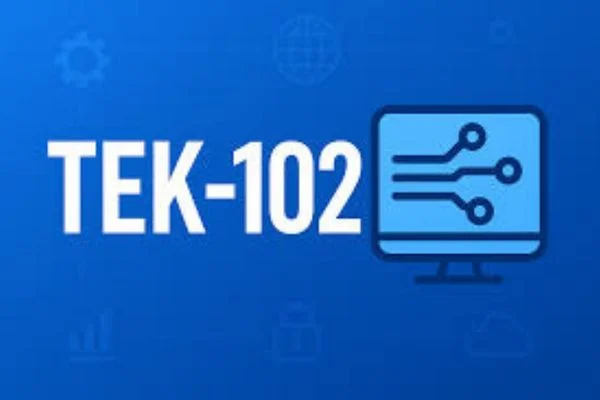
Source: foxtechview.com
Introduction: The Dawn of a New Computing Era
In the ever-evolving landscape of computing technology, quantum supremacy stands as perhaps the most significant milestone of the 21st century—a testament to human ingenuity and our deepening understanding of quantum mechanics. This breakthrough concept represents the pivotal moment when quantum computers definitively surpass the capabilities of even the most powerful classical supercomputers, solving problems that would be practically impossible using traditional computing methods.
The term “quantum supremacy” was first coined by theoretical physicist John Preskill in 2012, describing a watershed moment that many experts believed might take decades to achieve. Yet, in a remarkably short timespan, we’ve witnessed multiple claims of this achievement, igniting both scientific celebration and controversy. This comprehensive guide explores the fascinating journey toward quantum supremacy, its current status, and its profound implications for our technological future.
The Quantum Computing Revolution: Fundamentals Explained
Classical vs. Quantum Computing: A Paradigm Shift
To appreciate the significance of quantum supremacy, we must first understand the fundamental differences between classical and quantum computing:
| Feature | Classical Computing | Quantum Computing |
| Basic Unit | Bit (0 or 1) | Qubit (can represent 0, 1, or both simultaneously) |
| Processing Method | Sequential | Parallel across multiple states |
| Key Principles | Boolean logic | Quantum mechanics (superposition, entanglement) |
| Error Handling | Relatively straightforward | Extremely challenging due to quantum decoherence |
| Scaling | Linear performance increases with more processors | Potentially exponential increase with more qubits |
| Physical Implementation | Silicon-based transistors | Various approaches (superconducting circuits, trapped ions, photonics) |
Classical computers, which power everything from smartphones to supercomputers, process information using bits that exist in one of two states: 0 or 1. They excel at deterministic calculations, executing precise instructions sequentially with remarkable reliability.
Quantum computers, by contrast, leverage the strange properties of quantum mechanics to process information in fundamentally different ways:
- Superposition: Unlike classical bits, qubits can exist in multiple states simultaneously, enabling quantum computers to explore multiple solution paths concurrently.
- Entanglement: Qubits can become “entangled,” forming connections where the state of one qubit instantaneously affects another, regardless of the distance separating them—what Einstein famously called “spooky action at a distance.”
- Quantum Interference: Quantum algorithms manipulate probabilities to enhance correct solutions and suppress incorrect ones, steering computation toward the desired outcome.
These properties give quantum computers extraordinary advantages for specific types of problems, particularly those involving exponential growth in complexity as variables increase.
The Historic Quest for Quantum Supremacy
Early Theoretical Foundations
The theoretical groundwork for quantum computing began in the early 1980s with physicist Richard Feynman’s observation that classical computers struggle to efficiently simulate quantum systems. This insight suggested that computers based on quantum principles might solve certain problems more efficiently than classical computers ever could.
Throughout the 1990s and early 2000s, quantum algorithms like Shor’s algorithm (for factoring large numbers) and Grover’s algorithm (for searching unsorted databases) theoretically demonstrated quantum computing’s potential to solve specific problems exponentially faster than classical approaches—but implementing these algorithms required quantum hardware beyond what was then possible.
From Theory to Reality: The Race Accelerates
The past decade has witnessed remarkable progress in quantum computing hardware:
- 2011: D-Wave Systems introduces its first commercial quantum annealer, though its quantum nature and advantages remain subjects of debate.
- 2016: IBM offers public cloud access to a 5-qubit quantum processor, democratizing access to quantum computing resources.
- 2017: Google announces its 72-qubit Bristlecone processor, explicitly targeting quantum supremacy.
- 2018: Intel unveils its 49-qubit test chip, while multiple companies begin offering quantum computing as a service.
Google’s Watershed Moment
In October 2019, Google published a landmark paper in the journal Nature claiming to have achieved quantum supremacy with its 53-qubit Sycamore processor. The team reported that their quantum computer performed a specific calculation involving random quantum circuit sampling in approximately 200 seconds—a task they estimated would take Summit, the world’s most powerful supercomputer at that time, approximately 10,000 years.
The specific problem involved sampling the output of randomly generated quantum circuits—a task naturally suited to quantum computers but challenging for classical machines to simulate. While not immediately practical, this demonstration provided compelling evidence that quantum computers could indeed outperform classical systems for certain specialized tasks.
Controversies and Challenges
Google’s claim faced immediate scrutiny. IBM researchers countered that with optimized classical algorithms and sufficient storage, a supercomputer could potentially solve the same problem in approximately 2.5 days—still slower than Google’s quantum solution but far from the claimed 10,000-year timeframe.
This counterargument highlighted an important nuance in quantum supremacy claims: the comparison depends heavily on the specific implementation details of both the quantum algorithm and its classical competition. The goalposts for supremacy continue to move as classical algorithms improve and quantum hardware evolves.
Beyond Google: The Global Quantum Race Intensifies
China’s Quantum Achievements
In December 2020, a team at the University of Science and Technology of China (USTC) reported quantum supremacy using a photonic quantum computer named Jiuzhang. Using a different approach called “Gaussian boson sampling,” their system detected up to 76 photons, completing in minutes a calculation they claimed would take the world’s fastest supercomputer 600 million years.
By 2021, the same team announced an upgraded 66-qubit programmable superconducting quantum processor named “Zuchongzhi,” which they claimed performed certain calculations 100 trillion times faster than classical supercomputers.
Industry Leaders Advance the Field
The quantum computing ecosystem has expanded dramatically with multiple technological approaches:
- IBM: Continuing its quantum roadmap with increasingly sophisticated systems, focusing on error mitigation and quantum volume as performance metrics.
- Intel: Developing silicon-based spin qubit technology, leveraging existing semiconductor manufacturing expertise.
- Microsoft: Pursuing topological qubits, a theoretical approach promising greater stability.
- IonQ: Advancing trapped-ion quantum computers with impressive coherence times.
- Rigetti: Combining superconducting qubits with a unique hybrid classical-quantum architecture.
- PsiQuantum: Working on photonic quantum computing at an unprecedented scale, aiming for millions of qubits.
Understanding the Technical Challenges
The Quantum Computing Obstacle Course
Several fundamental challenges continue to constrain quantum computing’s potential:
- Quantum Decoherence: Quantum states are extraordinarily fragile, easily disrupted by tiny environmental interactions like electromagnetic radiation, temperature fluctuations, or physical vibrations. This decoherence introduces errors into calculations and represents perhaps the most significant obstacle to building large-scale quantum computers.
- Error Rates: Current quantum processors have relatively high error rates, limiting the complexity of calculations they can reliably perform. Significant reductions in error rates are necessary for tackling practical problems.
- Quantum Error Correction: Creating fault-tolerant quantum computers requires sophisticated error correction techniques that often demand many physical qubits to represent a single logical qubit—sometimes requiring thousands of physical qubits per logical qubit.
- Scalability: Engineering challenges multiply as systems scale to more qubits, particularly in maintaining coherence, reducing crosstalk between qubits, and creating precise control systems.
- Quantum-Classical Interface: Efficiently transferring information between quantum and classical systems presents significant engineering challenges.
The Ongoing Debate: What Constitutes “True” Quantum Supremacy?
The quantum computing community continues to debate the criteria for claiming genuine quantum supremacy:
- Problem Selection: Critics note that early supremacy demonstrations involved contrived problems specifically chosen to showcase quantum advantages while having limited practical applications.
- Classical Benchmarking: As classical algorithms continue to improve, the comparison baseline shifts, sometimes narrowing the quantum advantage.
- Verification Challenges: For some quantum computations, classically verifying the results becomes impossible, creating a paradoxical situation where supremacy can be claimed but not definitively proven.
- Practical Value: Many researchers argue that “quantum advantage” for practically useful problems represents a more meaningful milestone than supremacy demonstrations for specialized test cases.
Quantum Supremacy’s Practical Implications
Near-Term Applications: The NISQ Era
Current quantum computers exist in what researchers call the Noisy Intermediate-Scale Quantum (NISQ) era, characterized by devices with dozens to hundreds of qubits with non-negligible error rates. Despite these limitations, NISQ devices show promise for specific applications:
- Quantum Chemistry Simulations: Modeling molecular structures and chemical reactions at the quantum level could accelerate materials science and drug discovery.
- Optimization Problems: Finding optimal solutions for complex logistics, financial portfolio management, and resource allocation challenges.
- Machine Learning Applications: Quantum-enhanced algorithms may offer advantages for specific ML tasks, particularly in handling high-dimensional data.
- Financial Modeling: Quantum algorithms for option pricing, risk assessment, and market simulation.
Long-Term Revolutionary Potential
As quantum computing technology matures beyond the NISQ era, transformative applications could emerge:
- Cryptography Revolution: Shor’s algorithm running on sufficiently powerful quantum computers could break widely-used RSA and elliptic curve cryptography, necessitating a transition to quantum-resistant encryption methods.
- Materials Science Breakthroughs: Precise simulation of quantum materials could lead to room-temperature superconductors, more efficient solar cells, better batteries, and novel catalysts, potentially addressing major energy and environmental challenges.
- Pharmaceutical Innovation: Accurate modeling of protein folding and drug interactions at the molecular level could revolutionize drug discovery, potentially reducing development timelines from years to months.
- Artificial Intelligence Advancement: Quantum machine learning algorithms might enable pattern recognition in complex datasets beyond classical capabilities, potentially leading to breakthroughs in natural language processing, computer vision, and other AI domains.
- Climate Modeling: Enhanced simulation capabilities could improve climate models, potentially leading to better predictions and mitigation strategies.
The Economic Implications of Quantum Supremacy
The global race for quantum advantage has significant economic dimensions:
- Government Investment: The United States, China, European Union, Japan, and others have committed billions to national quantum initiatives, recognizing the strategic importance of leadership in this field.
- Venture Capital Flows: Quantum computing startups attracted over $1.5 billion in venture capital funding in 2021 alone, reflecting growing confidence in commercial applications.
- Industry Adoption: Major corporations across pharmaceuticals, finance, logistics, and materials science are establishing quantum computing teams and partnerships, preparing for potential competitive advantages.
- Workforce Development: A growing demand for quantum computing expertise has sparked new educational programs and professional opportunities, creating an emerging quantum workforce.
Ethical and Security Considerations
Quantum supremacy brings significant societal considerations:
- Cybersecurity Implications: The potential to break current encryption standards raises critical security concerns for governments, financial institutions, and personal privacy.
- Digital Divide Concerns: As with many advanced technologies, ensuring equitable access to quantum computing capabilities presents challenges in preventing a widening technological gap.
- Dual-Use Potential: Quantum computing applications in materials science and cryptography have potential military and national security implications, raising complex ethical questions.
- Environmental Considerations: Current quantum computers require significant energy for cooling and operation, though they could eventually enable more energy-efficient solutions in other domains.
The Future Landscape: What Comes Next?
The Roadmap to Practical Quantum Advantage
The path from current quantum supremacy demonstrations to widespread practical applications involves several key milestones:
- Increasing Qubit Quality: Reducing error rates and improving coherence times to enable more complex calculations.
- Scaling Quantum Systems: Building systems with hundreds to thousands of high-quality qubits while maintaining precise control.
- Implementing Error Correction: Developing practical quantum error correction techniques to create fault-tolerant logical qubits.
- Creating Quantum Software Ecosystems: Building more sophisticated programming tools, compilers, and algorithms to harness quantum capabilities effectively.
- Developing Hybrid Approaches: Creating effective quantum-classical computing interfaces and algorithms that leverage the strengths of both paradigms.
Timeline Projections
Expert opinions vary widely on the timeline for practical quantum advantage:
- Optimistic View: Some companies project useful quantum advantage for specific industry applications within 3-5 years.
- Moderate View: Many academic researchers expect a practical quantum advantage for a broader range of problems within 5-10 years.
- Conservative View: Some experts believe that fully fault-tolerant, large-scale quantum computing may require 15+ years of development.
Conclusion: The Ongoing Quantum Journey
Quantum supremacy represents not an endpoint but a milestone in humanity’s quantum computing journey. While early demonstrations have proven the theoretical possibility of quantum advantages, the path to practical, widespread quantum computing applications continues to present formidable challenges.
The coming decade will likely witness continued progress in hardware quality, algorithmic development, and practical applications—with periods of both breakthrough advances and sobering setbacks. Throughout this evolution, quantum computing will increasingly complement classical computing, each excelling in different domains rather than one wholly replacing the other.
What remains certain is that quantum supremacy has fundamentally altered our understanding of computational limits. Problems once considered practically unsolvable now appear within reach, opening new frontiers in science, medicine, economics, and beyond. The quantum future has arrived—not with an immediate revolution, but with the first compelling evidence that a computational revolution is indeed possible.
Frequently Asked Questions (FAQs) About Quantum Supremacy
Q1. What exactly is quantum supremacy?
Quantum supremacy (sometimes called “quantum advantage”) refers to the demonstration that a quantum computer can solve a problem that would be practically impossible for any classical computer to solve in a reasonable timeframe. It represents the threshold where quantum computers definitively outperform the most advanced classical supercomputers for specific tasks.
Q2. Has quantum supremacy been achieved?
Several organizations have claimed to achieve quantum supremacy, most notably Google in 2019 and researchers from the University of Science and Technology of China in 2020. These claims involve quantum computers solving specific problems significantly faster than the estimated time for classical supercomputers. However, there remains ongoing debate about the criteria for “true” quantum supremacy, especially as classical algorithms continue to improve.
Q3. Does quantum supremacy mean quantum computers are ready to replace classical computers?
No. Quantum supremacy demonstrations typically involve narrow, specialized problems designed to showcase quantum advantages rather than practical applications. Current quantum computers remain limited by high error rates, short coherence times, and the small number of qubits. Classical computers will continue to excel at most everyday computing tasks for the foreseeable future.
Q4. What practical problems can quantum computers solve better than classical computers?
Quantum computers show particular promise for:
- Simulating quantum systems in chemistry and materials science
- Factoring large numbers (relevant to cryptography)
- Solving complex optimization problems in logistics, finance, and machine learning
- Accelerating certain database search functions
- Enhancing machine learning for specific applications
Most of these applications require more advanced quantum computers than what exists today.
Q5. Will quantum computers break all encryption?
Not all encryption, but quantum computers with sufficient power could potentially break widely-used public-key cryptography systems like RSA and ECC using Shor’s algorithm. This has prompted the development of “post-quantum cryptography”—encryption methods resistant to quantum attacks. Importantly, certain encryption methods, like properly implemented one-time pads and some symmetric key algorithms, are considered quantum-resistant.
Q6. How many qubits are needed for practical quantum computing applications?
The required number varies significantly by application:
- Limited practical applications: 50-100 error-corrected qubits
- Breaking current cryptography: Estimated 4,000-20,000 error-corrected qubits
- Complex molecular simulations: Potentially millions of error-corrected qubits
Note that “error-corrected” qubits (logical qubits) may require many physical qubits each—potentially hundreds or thousands, depending on error rates.
Q7. What are the main competing technologies for building quantum computers?
Several approaches are being actively developed:
- Superconducting qubits: Used by Google, IBM, and others; involves superconducting circuits operating at near absolute zero temperatures.
- Trapped ions: Employed by IonQ, Honeywell/Quantinuum; uses charged atoms suspended in electromagnetic fields.
- Photonic quantum computing: Pursued by Xanadu, PsiQuantum; uses particles of light as qubits.
- Silicon spin qubits: Developed by Intel and academic groups; leverages semiconductor manufacturing techniques.
- Topological qubits: Researched by Microsoft; a theoretical approach promising greater stability but not yet demonstrated.
Each approach offers different advantages in terms of coherence time, gate fidelity, scalability, and operating conditions.






